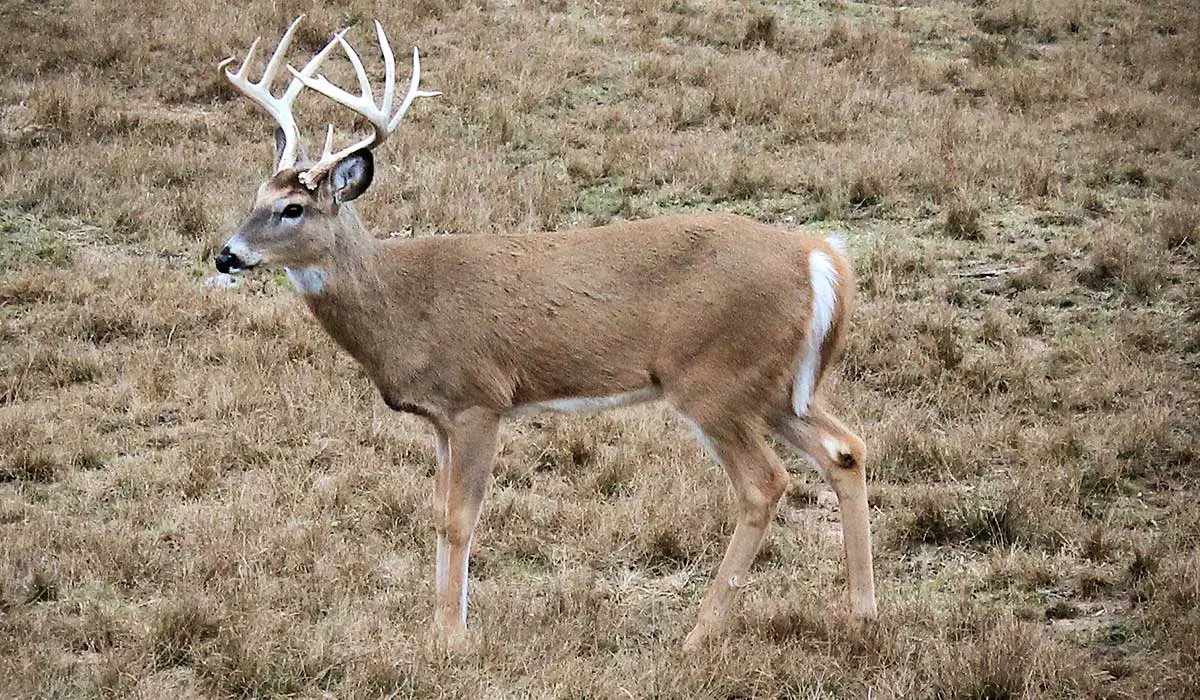Bucks move up to 1 to 2 miles in a day. Understanding how far bucks can travel in a day is imperative for hunters and wildlife enthusiasts.
North American hunters enjoy hunting deer, one of the most sought-after game animals.
Deer bucks travel around looking for food, shelter, and mates. Depending on their environment, time of year, and weather conditions, they move during the day.
Some bucks stay close to home while others travel far. Therefore, knowing how far bucks move each day can help hunters decide where to position themselves to find a target.

Credit: www.mossyoak.com
Contents
Movement Patterns Of Bucks
Bucks are known for their movement patterns, but how much do they move each day? During the non-breeding seasons, bucks can move up to 2 miles each day in search of food and better habitat. In contrast, during the breeding season, bucks are more active and can move up to 10 miles per day in search of mates.
Seasonal changes also affect buck movement patterns. During spring and summer, bucks move less while in the fall, they are more active and wander over larger areas in search of food. The factors that influence movement throughout the year include food availability, weather, and other environmental factors.
So, next time you’re out in the wilderness, keep an eye out for these majestic creatures and their daily movements.
How Far Do Bucks Move In A Day?
Studies and research have been conducted to determine the daily movement of bucks. Findings show that bucks move an average of 1-2 miles a day. Many factors can influence the distance, such as habitat, food availability, mating season, and hunting pressure.
For example, bucks may roam further during the rut to find a mate, and they may also start to shift their movement patterns in accordance with hunting pressure. Understanding how far bucks move in a day is essential for hunters looking to track and hunt deer effectively.
By exploring the factors that influence a buck’s movement, we can gain valuable insights into how to adjust our hunting tactics accordingly.
Tracking Buck Movement
Tracking buck movement is crucial for a successful hunt. There are different methods available, including using maps and scouting, but technology has made it easier. Gps trackers and trail cameras can provide valuable data on buck movement. Knowing where bucks travel can help in setting up stands and predicting their patterns.
Tracking also allows for monitoring the health of the buck population. Consistent data collection is key to understanding and predicting buck movement. Overall, tracking buck movement is an important aspect of hunting and can greatly increase the chances of success.
Hunting Strategies Based On Buck Movement
Bucks move differently during early, rut, and late season hunting, which is why you should know specific strategies that suit each season. During the early hunting season, you need to focus on feeding areas as bucks are busy preparing for winter.
During the rut season, bucks move more than usual as they chase females. Your strategy should involve targeting travel corridors and scrape lines. During late season hunting, bucks are looking for food sources, and you can attract them by planting food plots.
These strategies will help you in hunting without waiting for too long, and you can efficiently plan your hunting sessions by staying aware of the buck’s movement. Try different strategies and see which one works best for you!
FAQ: How Far Do Bucks Travel In A Day
How Far Can A Buck Travel In A Day?
On average, bucks can travel up to 2 miles in a day, but during the breeding season, that range can increase to 10 miles.
What Factors Affect A Buck’S Movement?
Food availability, weather conditions, breeding season, hunting pressure, and habitat quality are all factors that can affect a buck’s movement.
What Time Of Day Are Bucks Most Active?
Bucks are most active during the early morning and late afternoon. They tend to rest in the middle of the day when it’s hotter.
How Far Can A Mature Buck Travel During The Rut?
During the rut, a mature buck can travel up to 10 miles a day in search of a mate.
The bottom line
Bucks are elusive creatures that are hard to hunt down. Understanding their daily habits and movements, however, can significantly improve your chances of success. Research shows that bucks can travel considerable distances within their home ranges in one day, possibly covering several miles.
Food availability, weather conditions, and hunting pressure can affect their movements.

